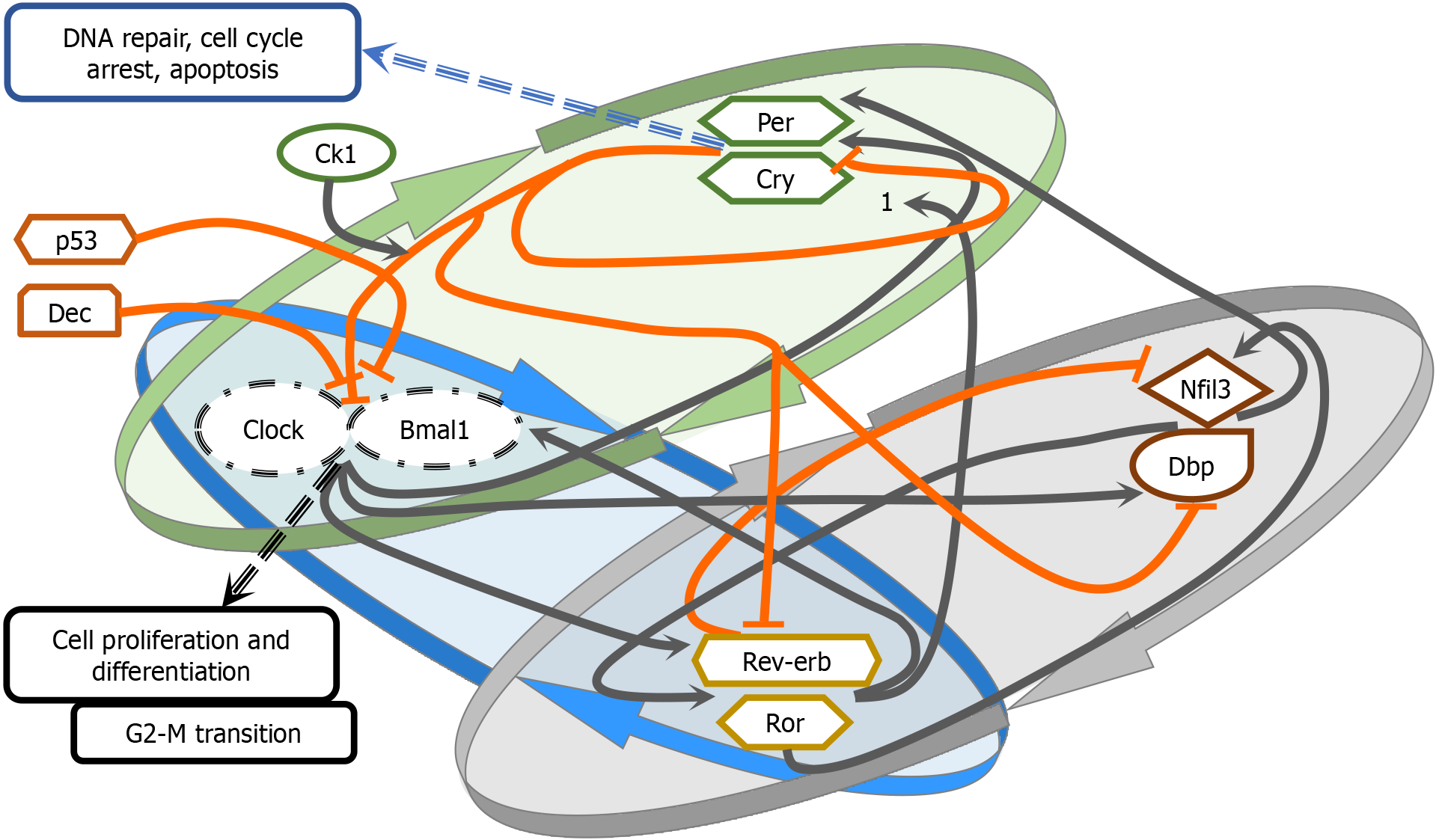Copyright
©The Author(s) 2024.
World J Clin Oncol. Jul 24, 2024; 15(7): 818-834
Published online Jul 24, 2024. doi: 10.5306/wjco.v15.i7.818
Published online Jul 24, 2024. doi: 10.5306/wjco.v15.i7.818
Figure 1 Schematic illustration of the intricate functions of the mammalian circadian clock.
Transcriptional-translational feedback loops are highlighted along with the regulatory mechanisms of the clock, interactions of circadian clock genes with cellular processes and regulation of complex biological mechanisms. The circadian clock mechanism primarily relies on a core feedback loop (green area) involving the transcription factors BMAL1 and CLOCK. These factors heterodimerize and bind to the promoters of target genes, such as PER and CRY. The proteins encoded by these genes form complexes that inhibit their own transcription by interfering with the activity of BMAL1 and CLOCK. A second feedback loop (blue area) features the transcriptional roles of REV-ERB. Ck1 and p53 are involved in phosphorylating PER for degradation. ROR/REV-ERB regulates BMAL1 transcription. The DEC gene contributes to circadian gene regulation. A third feedback loop (grey area) features the interrelationship between ROR/REV-ERB and DBP/NFIL3. There are additional loops and components that contribute to the regulation of the circadian clock. PERs can form a complex (not shown) with the ATM kinase and the checkpoint kinase Chk2, thereby influencing DNA repair, cell cycle arrest, and/or apoptosis. The diagram shows how these circadian components influence critical cellular functions such as cell proliferation and differentiation and the G2-M transition in cell cycle progression (from the G2 phase to the mitotic phase). Each of these processes is essential for the normal functioning of cells and organisms. They work together to ensure that cells divide properly, maintain their genetic integrity, differentiate into various cell types as required, and eliminate cells that are no longer needed or are potentially harmful. Disruptions in any of these processes can lead to serious health issues, including developmental abnormalities, immune system dysfunction, and various forms of cancer. Dark grey lines: Positive regulation of transcription in a loop. Orange lines: Negative regulation of transcription. 1CRY1 gene.
- Citation: Savvidis C, Kallistrou E, Kouroglou E, Dionysopoulou S, Gavriiloglou G, Ragia D, Tsiama V, Proikaki S, Belis K, Ilias I. Circadian rhythm disruption and endocrine-related tumors. World J Clin Oncol 2024; 15(7): 818-834
- URL: https://www.wjgnet.com/2218-4333/full/v15/i7/818.htm
- DOI: https://dx.doi.org/10.5306/wjco.v15.i7.818









